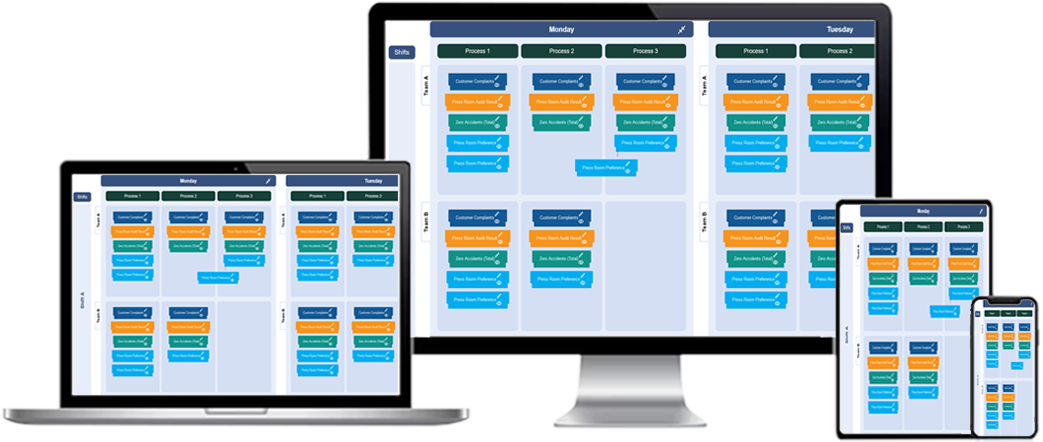The TCard system is a visual task management tool designed to streamline workflow, track tasks, and enhance operational efficiency across various industries. Originally developed as a manual board system, modern digital TCard systems provide real-time updates, automation, and integration capabilities to improve business processes. Whether used in manufacturing, healthcare, logistics, or maintenance operations, TCard systems ensure that tasks are assigned, monitored, and completed efficiently.

1. What Is a TCard System?
A TCard system is a structured approach to task tracking using color-coded cards (TCards) placed on a board that represents different workflow stages. Each TCard contains task details such as assigned personnel, deadlines, priority levels, and completion status. Digital TCard systems replicate this process with enhanced functionality, allowing remote access, automated notifications, and performance analytics.
2. Key Features of a TCard System
- Task Scheduling: Assign and organize tasks based on priority and deadlines.
- Workflow Visualization: Display tasks in a structured format to improve visibility.
- Customizable Categories: Adapt the system to specific business needs with custom columns and statuses.
- Automated Notifications: Alert team members about task updates and deadlines.
- Real-Time Collaboration: Enable teams to update and monitor tasks from different locations.
- Performance Tracking: Generate reports to measure efficiency and identify process bottlenecks.
3. Industries That Benefit from a TCard System
- Manufacturing: Used for production planning, machine maintenance, and quality control.
- Healthcare: Manages patient appointments, equipment maintenance, and staff scheduling.
- Logistics: Tracks shipments, inventory levels, and warehouse management.
- Facility Management: Assigns maintenance tasks, tracks repairs, and ensures compliance.
- Project Management: Organizes team workflows, deadlines, and project milestones.
4. How to Implement a Digital TCard System
Step 1: Define Your Workflow
Identify the key stages of your workflow and structure your TCard system accordingly. Common stages include:
- To Do
- In Progress
- Awaiting Review
- Completed
Customize these stages based on your industry and business requirements.
Step 2: Create and Categorize TCards
Design TCards to include essential task details such as:
- Task Name
- Assigned Personnel
- Due Date
- Priority Level
- Additional Notes
Use color-coding to differentiate between task types and priority levels.
Step 3: Assign and Monitor Tasks
Allocate tasks to team members and set deadlines. Use automated tracking to ensure timely updates and completion.
Step 4: Integrate with Other Systems
Connect the TCard system with ERP, MES, or project management tools to streamline operations.
Step 5: Analyze Performance and Optimize
Generate reports to assess task efficiency, identify bottlenecks, and improve workflow strategies.
5. Benefits of Using a TCard System
- Increased Efficiency: Reduces delays by ensuring tasks are well-organized and tracked.
- Improved Communication: Enhances team collaboration through real-time task updates.
- Better Resource Management: Allocates workforce and equipment effectively.
- Data-Driven Decision Making: Uses analytics to optimize workflow strategies.
- Scalability: Adapts to the needs of growing businesses.
6. The Future of TCard Systems
With advancements in automation, AI, and cloud computing, TCard systems are evolving to provide predictive analytics, smart scheduling, and seamless integration with IoT devices. Businesses looking to improve operational efficiency can leverage these advancements to drive productivity and achieve long-term success.
Tcard system explained
What is a TCard system?
A TCard system is a visual task management tool that helps track and organize work processes efficiently.
How does a TCard system work?
It uses cards to represent tasks, which are moved across columns or sections to track progress and status.
What are the key components of a TCard system?
Key components include task cards, workflow columns, priority markers, and tracking mechanisms.
What industries benefit from using a TCard system?
Industries like manufacturing, healthcare, logistics, and maintenance benefit from TCard systems for task management.
How does a TCard system improve task management?
It provides a clear structure for tracking tasks, reducing confusion, and improving efficiency.
What is the difference between a physical and digital TCard system?
A physical system uses paper cards, while a digital version offers automation, tracking, and integrations.
How does a TCard system enhance workflow visibility?
By displaying tasks visually, it helps teams quickly assess progress and identify bottlenecks.
Can a TCard system be customized for specific business needs?
Yes, TCard systems can be tailored with custom workflows, categories, and reporting features.
How does a TCard system help with resource allocation?
It tracks workload distribution, ensuring that resources are allocated efficiently and effectively.
What are the benefits of using a digital TCard system?
Digital TCard systems offer real-time updates, remote access, automation, and integration with other tools.
How can a TCard system assist in preventive maintenance?
It schedules and tracks maintenance tasks, reducing downtime and improving equipment reliability.
What reporting capabilities does a TCard system offer?
It provides reports on task completion, workflow efficiency, resource utilization, and trends.
Can a TCard system integrate with other management tools?
Yes, TCard systems can integrate with ERP, CRM, and project management tools for seamless operations.
How does a TCard system improve team collaboration?
By centralizing task tracking, it ensures transparency, accountability, and improved team coordination.
What are the best practices for implementing a TCard system?
Best practices include clear workflow design, regular updates, user training, and continuous optimization.